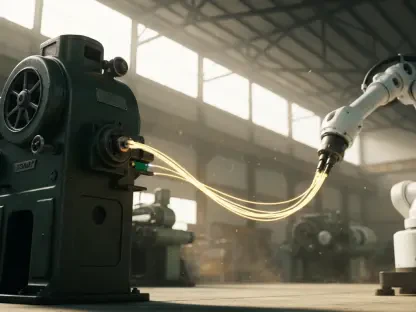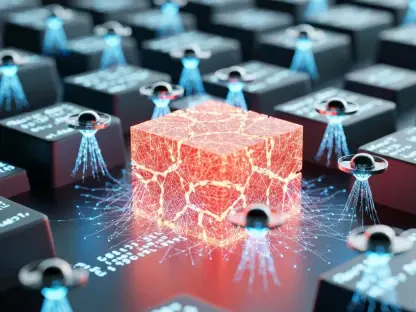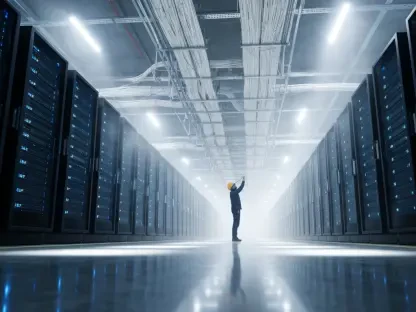Imagine a world where the delicate art of sashimi preparation, steeped in centuries-old Japanese tradition, is transformed by cutting-edge technology to deliver unparalleled quality and ethical standards to American diners. In an era where the seafood industry grapples with issues of sustainability, quality degradation, and humane practices, a California-based startup, Shinkei Systems, is redefining fish processing with artificial intelligence (AI) and robotics. This review delves into the innovative integration of the traditional ikejime technique with modern automation, examining how this technology enhances flavor, extends shelf life, and addresses ethical concerns in the U.S. market. The focus is on Shinkei’s pioneering Poseidon robot and its potential to reshape culinary standards.
The Emergence of AI in Fish Preparation
The concept of AI-driven sashimi processing marks a fascinating intersection of cultural heritage and technological innovation. Shinkei Systems, headquartered in El Segundo, California, has harnessed AI and robotics to automate the ikejime method—a meticulous Japanese practice of swiftly killing fish to preserve quality by minimizing stress hormones. This approach stands in stark contrast to conventional methods where fish often suffocate, leading to compromised texture and taste.
What sets this development apart is its relevance to broader food industry challenges. With growing consumer demand for high-quality, ethically sourced seafood, automating a labor-intensive process like ikejime offers a scalable solution. This technology not only promises to elevate the dining experience but also addresses critical concerns around animal welfare, positioning it as a game-changer in seafood handling.
Key Technological Components and Features
Poseidon Robotic System
At the heart of Shinkei Systems’ innovation lies the Poseidon robot, a refrigerator-sized device designed to replicate the precision of the ikejime technique. Using advanced AI algorithms, Poseidon identifies fish species and targets specific anatomical points, such as the brain and gills, to ensure a rapid and humane kill. This minimizes the release of stress hormones that degrade fish quality.
Following the initial process, the robot chills the fish in an ice slurry to facilitate blood drainage, a step crucial for enhancing flavor and extending shelf life. The result is sashimi-grade fish with superior texture and taste, meeting the standards of upscale culinary markets. This automation eliminates the variability of manual handling, ensuring consistent outcomes.
AI-Powered Precision and Automation
The role of AI in Poseidon extends beyond mere species recognition to delivering surgical precision in processing. By analyzing visual data, the system pinpoints exact locations for spiking, reducing the margin of error to near zero. Such accuracy is vital for maintaining the integrity of the fish, as even slight deviations can affect quality.
Automation further enhances efficiency, allowing the robot to process multiple fish with speed and consistency unattainable by human hands. This scalability is a significant advantage for commercial applications, enabling suppliers to meet high demand without sacrificing standards. The seamless integration of these features underscores the technology’s potential for widespread adoption in the seafood sector.
Recent Innovations and Industry Trends
The landscape of food technology is evolving rapidly, with automation emerging as a key driver of sustainability and quality improvement. Shinkei Systems aligns with this trend by modernizing a traditional practice to cater to contemporary needs. Their focus on AI-driven processing reflects a broader industry shift toward leveraging technology to solve long-standing inefficiencies.
Consumer preferences are also shifting, with an increasing emphasis on ethically produced seafood. Diners are more discerning, seeking products that align with values of humane treatment and environmental responsibility. Shinkei’s approach taps into this demand, offering a product that not only excels in quality but also resonates with ethical considerations.
A notable trend is the push for accessibility in premium food markets. By automating ikejime, Shinkei aims to bring high-end sashimi to a wider audience, potentially transforming how fish is perceived and consumed in everyday settings. This democratization of quality is a promising direction for the industry at large.
Real-World Applications and Impact
Shinkei Systems has already made significant inroads in the U.S. seafood market, partnering with prestigious restaurants such as Providence, Atomix, and Sushi Zo. These collaborations highlight the technology’s appeal to high-end culinary establishments seeking exceptional fish quality. Chefs have noted the vivid appearance and preserved freshness of the processed fish, validating its superiority.
Retail partnerships with outlets like Happier Grocery further demonstrate the technology’s versatility, extending its reach beyond fine dining to consumer markets. Operations currently span regions like Washington, Central California, and Massachusetts, processing species such as black cod and black sea bass. This geographic and species diversity showcases the system’s adaptability to varied market needs.
The practical impact is evident in the supply chain model, where fishermen use Poseidon robots to process fish and sell them back to Shinkei under the Seremoni brand. This arrangement incentivizes adoption while ensuring a steady flow of premium products, illustrating a successful integration of technology into traditional fishing practices.
Challenges and Limitations in Adoption
Despite its promise, AI-driven sashimi processing faces notable hurdles. The high initial cost of robotic systems like Poseidon poses a barrier for many fishermen and small-scale operators. While the long-term benefits of quality and efficiency are clear, the upfront investment remains a significant obstacle to widespread implementation.
Spatial constraints also present challenges, particularly for fishermen working on limited deck space. Shinkei has responded by developing a more compact version, dubbed the “Block 2” robot, to address this issue. However, adapting to diverse operational environments continues to require innovative design solutions.
Market acceptance is another concern, as stakeholders may be hesitant to embrace a technology that diverges from familiar methods. Educating the industry about the advantages of automated ikejime—from ethical improvements to economic gains—remains a critical step. Efforts to reduce costs and enhance accessibility are underway to mitigate these adoption challenges.
Future Outlook for AI in Seafood Handling
Looking ahead, the trajectory of AI-driven sashimi processing appears promising, with potential for significant advancements. Shinkei Systems plans to expand operations to regions like Alaska and the Gulf of Mexico, targeting additional species such as salmon and red snapper. This geographic and operational growth could further solidify their market presence.
Technological refinements are also anticipated, with ongoing research aimed at enhancing robot efficiency and reducing costs. Such developments could make the technology viable for smaller enterprises, broadening its impact across the seafood industry. The integration of AI with other sustainability-focused innovations may also emerge as a key focus.
Long-term, this technology has the potential to set new benchmarks for fish quality and ethical handling. By establishing standards that prioritize both consumer satisfaction and humane practices, AI-driven processing could influence regulatory frameworks and industry norms, paving the way for a more responsible seafood sector.
Final Thoughts
Reflecting on this technological review, it becomes evident that Shinkei Systems has carved a niche by merging Japanese tradition with modern automation through the Poseidon robot. The journey showcases remarkable strides in enhancing fish quality and addressing ethical concerns within the U.S. seafood market. Moving forward, stakeholders should consider strategic partnerships to offset initial costs, while industry leaders could advocate for policies that incentivize adoption of such humane technologies. Exploring pilot programs in untapped regions might also accelerate integration, ensuring that the benefits of superior sashimi reach diverse communities. This innovation, having demonstrated its value, beckons a collaborative effort to redefine seafood standards for generations to come.









